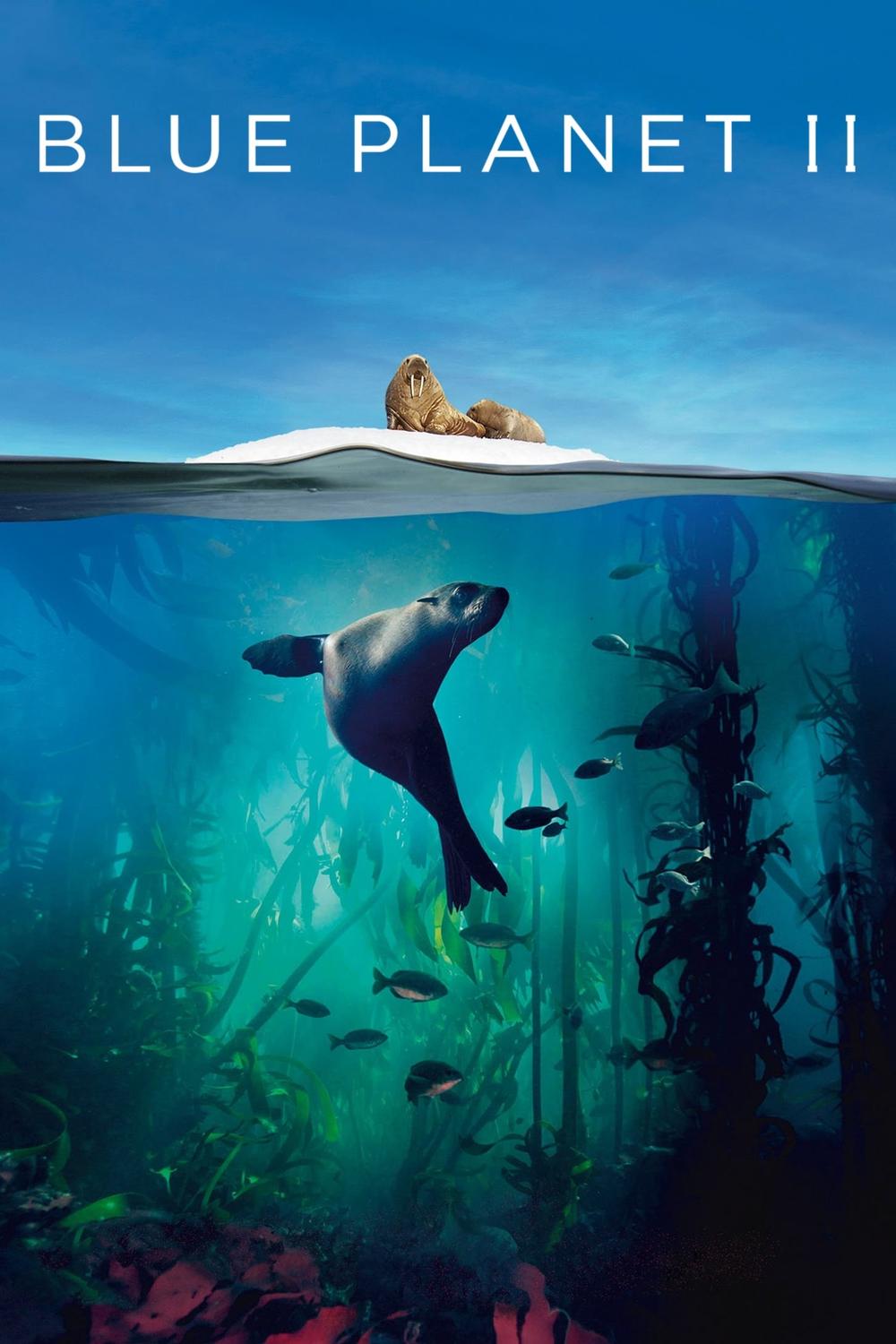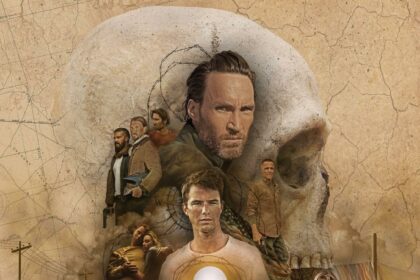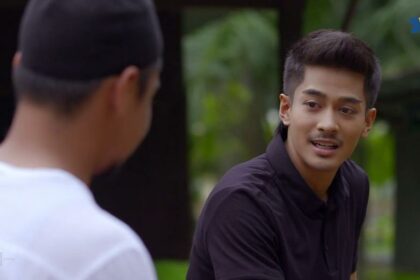
 Story & Synopsis
Story & Synopsis
In the highly anticipated sequel to the acclaimed documentary series, “Blue Planet II” takes viewers on a mesmerizing journey through the world’s oceans. Narrated by the legendary David Attenborough, this groundbreaking series delves deep into the mysteries of the sea, showcasing rare and unusual creatures while also shedding light on the pressing issues our oceans face.
Set nearly a generation after the original “Blue Planet” documentary, this sequel focuses heavily on mankind’s impact on the marine world, highlighting the devastating effects of global pollution and climate change. Through a series of revolutionary segments, viewers are treated to never-before-seen footage, including mesmerizing cuttlefish hypnotizing crabs, giant trevally leaping out of the water to catch birds, and the enchanting dancing yeti crabs.
From the depths of the deep sea to the vibrant coral reefs, from the open ocean to the lush green seas, “Blue Planet II” explores the diverse ecosystems that make up our oceans. With David Attenborough’s iconic narration guiding the way, the series provides a captivating glimpse into the intricate web of life in and around the seas, while also shedding light on the urgent threats facing marine life.
Featuring a total of 7 episodes, each running for 60 minutes, “Blue Planet II” is a cinematic masterpiece that immerses viewers in the beauty and complexity of the underwater world. With a stellar team of composers including Hans Zimmer, David Fleming, and Jacob Shea, the series weaves together stunning visuals and evocative music to create a truly unforgettable viewing experience.
Executive producers James Honeyborne and Mark Brownlow, along with a dedicated team of producers, have crafted a series that not only entertains but also educates and inspires audiences to protect our oceans for future generations. “Blue Planet II” is a testament to the power of storytelling and the importance of conservation, leaving a lasting impact known as the ‘Blue Planet effect’ by raising awareness of plastic pollution on a global scale.
 Cast & Crew
Cast & Crew
David Attenborough
| Actor/Role | Crew | Details |
|---|---|---|
| David Attenborough | Director, Narrator | 8 Episodes 2019 |
| Mark Brownlow | Director | 4 Episodes 2019 |
| Orla Doherty | Director, Producer | 1 Episode 2017 |
| James Honeyborne | Director, Executive Producer | 1 Episode 2017, 7 Episodes 2017, 8 Episodes 2019 |
| James O’Brien | Sound Effects | 1 Episode 2017 |
| David Fleming | Composer | 5 Episodes 2019 |
| Jacob Shea | Composer | 5 Episodes 2019 |
| Hans Zimmer | Composer | 5 Episodes 2019 |
| George Fenton | Composer | 1 Episode 2017 |
| Ted Giffords | Cinematographer | 2 Episodes 2017 |
| Roger Horrocks | Cinematographer | 2 Episodes 2019 |
| Roger Munns | Cinematographer | 1 Episode 2019 |
| Chris Bryan | Cinematographer | 1 Episode 2017 |
| Yoland Bosiger | Researcher | 7 Episodes 2017 |
| Kate Hopkins | Sound Editor | 7 Episodes 2017 |
| Matt Meech | Unknown | 2 Episodes 2017 |
| Shaikh Faruq | Unknown | Unknown |
| Dan Beecham | Unknown | Unknown |
 Reviews and feedback
Reviews and feedback
Welcome to the deep dive into the mesmerizing world of “Blue Planet II”! Just like a fish navigating through the vast ocean, this TV show takes you on a journey filled with wonder, beauty, and a touch of environmental awareness. Let’s explore what makes this series so special without needing CGI goggles!
Imagine a world where every frame is a masterpiece painted by nature itself, where every scene is a testament to the breathtaking beauty and complexity of marine life. This is precisely what “Blue Planet II” offers its viewers. And the best part? It’s all real! No CGI tricks up its sleeve, just pure, unadulterated footage captured over more than four years of filming.
- Plot and Themes: The narrative woven by “Blue Planet II” goes beyond showcasing the wonders of the ocean. It delves into the impact of human activities on marine ecosystems, serving as a poignant reminder of our responsibility towards preserving these underwater worlds.
- Acting and Characters: While there are no Hollywood actors in this series, the real stars here are the creatures that inhabit the deep sea. From playful dolphins to mysterious deep-sea fish, each character brings its own charm and uniqueness to the screen.
- Direction: The direction of “Blue Planet II” is nothing short of stellar. The seamless transition between different underwater habitats keeps viewers engaged and eager to discover what lies beneath the surface.
- Cinematography: With over 6,000 hours of underwater footage from 4,000 dives across 39 countries, the cinematography in this series is unparalleled. Every shot is a visual feast for the eyes, capturing moments that seem almost otherworldly.
If you’re looking for a binge-watching experience that will leave you in awe of the natural world, “Blue Planet II” should be at the top of your list. So grab your popcorn (or seaweed snacks) and get ready to embark on an adventure like no other!
Binge-watching Tips:
- Dive Deeper: Take breaks between episodes to research more about the marine life featured in each segment. You’ll be amazed at the fascinating facts you uncover!
- Appreciate Nature: While watching, pause from time to time to truly absorb the beauty on screen. It’s like having your own personal aquarium at home!
So, what are you waiting for? Dive into “Blue Planet II” and let yourself be swept away by the wonders that lie beneath the waves. Trust me; you won’t regret it!
“Blue Planet II” Rating: 9/10 – A visually stunning masterpiece that highlights both the beauty and fragility of our oceans.
| Pros | Cons |
|---|---|
| Brilliant filming capturing real underwater footage | No CGI or visual effects used |
| Showed the impact of humans on seas and oceans | Filming process took over four years |
| David Attenborough’s narration | Extensive filming involving 125 expeditions across 39 countries |
| Informative and educational about marine life | Lengthy episodes may not suit all viewers |
| Visually stunning and engaging | Some viewers may find the content emotionally distant |
Feedback
-
Blue Planet II (TV Mini Series 2017) - IMDb
David Attenborough returns to the world’s oceans in this sequel to the acclaimed documentary filming rare and unusual creatures of the deep, as well as documenting the problems our oceans fa… Read allDavid Attenborough returns to the world’s oceans in this sequel to the acclaimed documentary filming rare and unusual creatures of the deep, as well as documenting the problems our oceans face.David Attenborough returns to the world’s oceans in this sequel to the acclaimed documentary filming rare and unusual creatures of the deep, as well as documenting the problems our oceans face.
-
Blue Planet II | BBC Earth
In recent years, our knowledge of life beneath the waves has been transformed. Using cutting-edge technology, One Ocean takes us on a journey from the intense heat of the tropics to our planet’s frozen poles to reveal new worlds and extraordinary never-before-seen animal behaviours.58 minsThe deep is perhaps the most hostile environment on Earth, at least to us – a world of crushing pressure, brutal cold and utter darkness. We have barely begun to explore it, and yet it is the largest living space on the planet.
-
Blue Planet II - Wikipedia
Blue Planet IIis a 2017 British nature documentary series on marine life produced by the BBC Natural History Unit. Like its predecessor,The Blue Planet(2001), it is narrated and presented by the naturalist Sir David Attenborough.
-
BBC One - Blue Planet II
Supporting Content
- Costing the EarthCosting the Earth is a radio programme looking at man’s effect on the environment and how the environment reacts, questioning accepted truths, challenging those in charge and reporting on progress.Listen to the Blue Planet II collection
- Join in on the conversation about our oceans with Our Blue PlanetExploreOur Blue Planet, a digital project that is getting people talking about all things ocean.Visit theOur Blue Planetwebsite
- Explore our oceans in 360oSubmerge yourself in our blue planet by exploring this series of 360o videos:
- Test your knowledgeHow closely were you watching Blue Planet II? Try these CBBC quizzes:
- Emails made for youIf you’re fascinated by the wonders of our natural world, you’ll love updates from the BBC. We’ll tell you about new programmes, go behind the scenes and bring you incredible wildlife clips and articles.Sign up for our Natural History emails
- We all need more Blue Planet IIBlue Planet II is available now on DVD and Blu-ray from all good retailers.Experience the series in stunning 4K Ultra High Definition from 15th January 2018, available to pre-order now.
 Explanation (Spoiler)
Explanation (Spoiler)
Blue Planet II is a visually stunning and emotionally impactful TV show that delves into the profound effects humanity has had on the world’s oceans. The finale episode, titled “Our Blue Planet,” serves as a powerful reminder of the changes we have caused in the seas and the potential for reversing these damaging impacts.
The episode highlights the detrimental impact of human waste on marine life, showcasing heartbreaking instances such as a baby dolphin likely poisoned by microplastics and a baby albatross killed by a tiny plastic toothpick. These scenes evoke a sense of species guilt among viewers, emphasizing the urgent need for conservation efforts and environmental awareness.
However, amidst the somber realities presented in the show, there is a glimmer of hope and inspiration. Blue Planet II demonstrates how knowledge and awareness can drive positive change. For instance, the resurgence of sperm whales following the decline in commercial whaling showcases the potential for conservation success.
The episode also features stories of individual efforts making a significant impact, such as a conservation program in Trinidad that successfully increased Leatherback turtle numbers. These narratives underscore the importance of individual actions in contributing to larger conservation goals.
At the heart of Blue Planet II is the iconic voice of David Attenborough, whose profound message resonates throughout the series. In the finale, Attenborough emphasizes the power of awareness and the responsibility we hold in caring for our planet. His words serve as a call to action, urging viewers to take steps towards protecting our oceans and marine life.
While the challenges facing our oceans may seem daunting, Blue Planet II leaves viewers with a sense of empowerment rather than despair. The show’s message of galvanization encourages individuals to make a difference and work towards a sustainable future for our blue planet.
 Parents Guide & Age Rating
Parents Guide & Age Rating
TV-G
Age Rating:
Blue Planet II TV Show is suitable for all ages, including children and adolescents.
Parental Guide:
Blue Planet II TV Show is a visually stunning and educational series that showcases the beauty and wonders of marine life. Parents can feel confident watching this show with their children of all ages. The series is narrated by Sir David Attenborough and features cutting-edge videography and production value, making it an awe-inspiring experience for families.
There are no instances of sex, nudity, violence, gore, or profanity in Blue Planet II, making it a safe and family-friendly viewing choice. The show focuses on rare and unusual creatures of the deep oceans, as well as highlighting the environmental issues our oceans face.
Overall, Blue Planet II is a captivating and informative series that can be enjoyed by viewers of all ages, offering a fascinating look into the world’s oceans and the incredible creatures that inhabit them.
 Streaming and where to watch
Streaming and where to watch
| streaming service | extra information |
|---|---|
| discovery+ | You can stream Blue Planet II on discovery+ with a free trial available for new subscribers. |
| Amazon Prime Video | You can watch Blue Planet II on Amazon Prime Video. It is available for purchase. |
| Max | You can watch Blue Planet II and more new shows on Max. Plans start at $9.99/month. |
❝ Quotes and Cult
Footage of giant trevally fish leaping out of the water to nom on young arctic terns was the first collective chill Blue Planet II sent down the nation's spines.
It's our green seas, not the blue, that bring life to our oceans. Here sunlight powers the growth of enchanted forests of kelp, mangroves and prairies of sea grass. They are the most abundant but fiercely competitive places in the ocean to live.
Camera technology has come forwards in leaps and bounds since the original Blue Planet aired in 2001, and this allowed Blue Planet II to show us never-before-seen spectacles of nature. One such technological advance was a camera able to film in absolute darkness, which allowed the team to capture a display like no other.
A standout part of Blue Planet II's incredible camerawork was the use of cameras attached to the animals. This technique was able to give the team an insight into life under the sea. Of course, first they had to boop the cameras onto the animals.
The deep sea is a weird, weird place, and not just because of the strange as hell fishies that live down there. In Blue Planet II we were taken down to see a natural feature that beggars belief -- an underwater lake. The lake itself is made of brine, which is heavier than regular water and so pools on the ocean floor.This was actually a re-visiting of a previous Blue Planet classic, but as well as the picture being of a much higher quality this time around, the Blue Planet II team got amazing footage illustrating how deadly these deep sea brine lakes are. Eels which delve into the lake are liable to toxic shock, and millions watched the eerie sight of the fish convulsing and tying itself in literal knots after diving into the brine.
The sea is a scary place, but no one was emotionally prepared for the Bobbit worm.Lurking in the seabed, the metre-long Bobbit worm (named after a woman who severed her husband's penis) hides in wait, and if a fishy comes to close it leaps out and seizes the fish in its jaws.
The Portuguese Man O'War is a curious thing. It looks like a jellyfish, but in fact it is a collective of organisms living together in a colony.Blue Planet II gave us an intimate look at how this oddity survives, and when I say intimate I mean intimate. We got an amazingly close-up look at how the Man O'War catches and digests its food, which it snares in its 40-metre-long tentacles before reeling in the unfortunate animal.This was another example of the superior technology in Blue Planet II coming to bear. Luckily there are no actual bears in the sea though. Can you imagine? In the sea? It doesn't bear thinking about.
Blue Planet II is a gold-standard in science programming, and they proved that time and time again, though perhaps never more so than when they managed to capture never-before documented behaviours. Chief among these: the mollusc master of disguise.
Attenborough documentaries are a consistent source of unbelievably tense chase sequences, remember the baby iguana and the snakes from Planet Earth II? Well Blue Planet II was no exception.We followed the gauntlet run by Sally lightfoot crabs at low tide, nimbly leaping from rock to rock trying to escape both moray eels and octopuses -- both of which are capable of leaving the water to pursue the heroic crustaceans.
Penguins are a staple for nature documentaries. You may think you've seen just about every scene involving a penguin, or even a swarm of penguins, that you could ever see.But have you seen penguins having to tiptoe past the huge mountains of blubber that are elephant seals? Just being in the vicinity of these behemoths puts the birds in significant danger, and so they hobble past, trying desperately not to step on anything remotely crunchy or squeaky.
 Blue Planet II Reddit Talks
Blue Planet II Reddit Talks
Blue Planet II Reddit Summary:
Praise for the Show’s Authenticity and Visuals
Blue Planet II has been met with widespread acclaim, with many Redditors praising its stunning visuals and groundbreaking cinematography. The show’s producers have emphasized that all footage is captured in real time, without the use of CGI or other visual effects. This commitment to authenticity has been a major draw for viewers, who appreciate the opportunity to witness the wonders of the underwater world in their natural state.
Concerns about Climate Change and Environmental Threats
Beyond its visual appeal, Blue Planet II has also sparked important conversations about climate change and the threats facing our planet. The show highlights the devastating impact that human activities are having on the oceans, including climate disruption, pollution, and overfishing. Many Redditors have expressed concern about the future of the planet and the need for urgent action to address these issues.
Comparison to Previous Blue Planet Series and Planet Earth
Blue Planet II is the third installment in the Blue Planet series, which began in 2001. Redditors have generally agreed that Blue Planet II is on par with its predecessors, offering equally stunning visuals and engaging storytelling. Some have even argued that Blue Planet II is the best nature series of all time, surpassing even the highly acclaimed Planet Earth.
Questions about CGI and Authenticity
Despite the producers’ insistence that no CGI was used, some Redditors have questioned the authenticity of certain scenes. They point to instances where animals appear to be behaving in unnatural ways or where the lighting seems too perfect. However, most Redditors seem to believe that the vast majority of the footage is genuine, and they appreciate the filmmakers’ commitment to capturing the underwater world in its raw and unvarnished state.
Excitement for Blue Planet III
The success of Blue Planet II has generated a lot of anticipation for Blue Planet III, which is currently in production. Redditors are eager to see what new wonders the filmmakers will reveal in this upcoming installment. They are also hopeful that the show will continue to raise awareness about the importance of protecting our oceans and the planet as a whole.
Top discussions
- https://www.reddit.com/r/television/comments/7hhmjl/blue_planet_ii_has_become_the_most_watched_tv/
- https://www.reddit.com/r/television/comments/7qwgn4/blue_planet_ii_is_the_greatest_nature_series_of/
- https://www.reddit.com/r/todayilearned/comments/kq3qve/til_that_when_david_attenboroughs_series_blue/
- https://www.reddit.com/r/television/comments/7iwu6p/blue_planet_ii_is_the_best_television_ive_ever/
- https://www.reddit.com/r/television/comments/7segb2/how_real_is_blue_planet_ii/
- https://www.reddit.com/r/hometheater/comments/a73ftz/blue_planet_ii_is_on_netflix/
- https://www.reddit.com/r/television/comments/72rnqb/blue_planet_2_the_prequel_featuring_radiohead_and/
- https://www.reddit.com/r/television/comments/7b27y0/blue_planet_ii_episode_2_the_deep_was_absolutely/
- https://www.reddit.com/r/4kbluray/comments/10g9soq/planet_earth_ii_vs_blue_planet_ii_for_both_video/
 Frequently Asked Questions
Frequently Asked Questions
Is Blue Planet II CGI or real?
Producers are proud to affirm that nothing in the series is enhanced with CGI or other visual effects. All footage is captured in real time through a combination of patience, fortitude, and technology.
How long did Blue Planet II take to film?
Filming took place over a course of more than four years, involving 125 expeditions across 39 countries and producing more than 6,000 hours of underwater dive footage from over an estimated 4,000 dives.
Where was Blue Planet II filmed?
Blue Planet II was filmed in various locations, including Svalbard, Norway for scenes with walrus mothers and pups, and the Sea of Cortez, Mexico for capturing mobula rays at night.
Is Blue Planet II a documentary?
Yes, Blue Planet II is a wildlife documentary series presented and narrated by David Attenborough, specifically exploring the planet’s oceans with a focus on marine life.
What is the Blue Planet II effect?
The Blue Planet II series has been credited with raising awareness of plastic pollution both domestically and internationally, an influence that has been dubbed the ‘Blue Planet effect’ for its impact on environmental consciousness.
 Recommended Movie and TV Show
Recommended Movie and TV Show
Here is a list of similar documentary series and movies like Blue Planet II:
- Planet Earth II: A visually stunning documentary series that explores different habitats and wildlife around the world.
- Frozen Planet: An in-depth look at the polar regions and the animals that inhabit them.
- Human Planet: Explores the relationship between humans and nature in various environments.
- Seven Worlds One Planet: Showcases the diversity of wildlife and landscapes across seven continents.
- Our Planet: A visually breathtaking series that highlights the beauty of our planet and the challenges it faces.
- The Hunt: Examines the relationship between predators and prey in the animal kingdom.
- Africa: Explores the wildlife and landscapes of the African continent.
- David Attenborough’s Natural Curiosities: Investigates the wonders of the natural world through the eyes of David Attenborough.
- Life: A documentary series that showcases the diversity and resilience of life on Earth.


 Trending:
Trending:



 Discover more titles
Discover more titles


 Contribute to this page
Contribute to this page